Japan and the West: Performing Arts
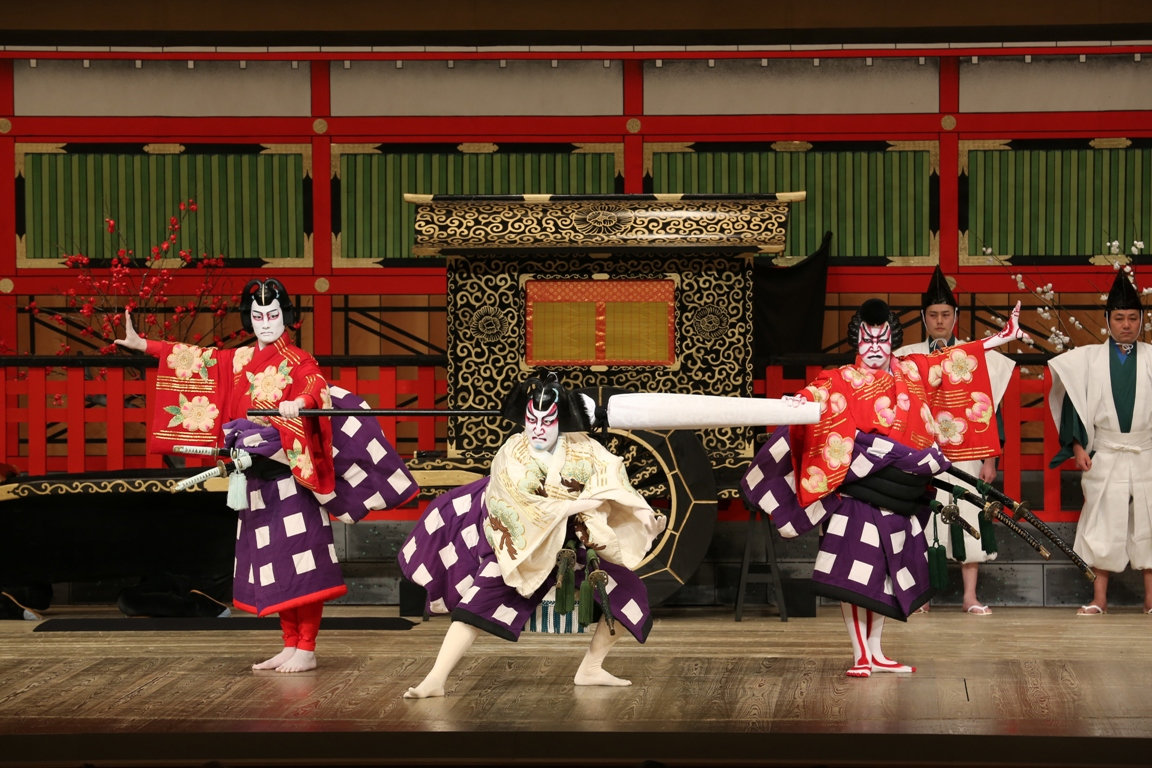
Outline
- Performing Arts
- Theatre (puppetry)
- (Light) Opera
- Dance
Theatre
- Japan - traditional and modern
- The West - traditional and modern
Traditional Theatre in Japan
- Noh
- Kabuki
- Bunraku
Noh 能
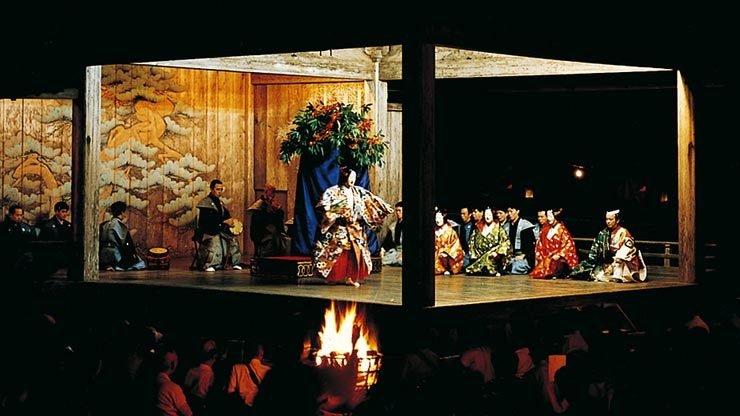
Features of Noh
- Use of masks /costume for characterisation
- Based around on-stage music
- Standardised stage environment
- Buddhist preoccupations
Masks
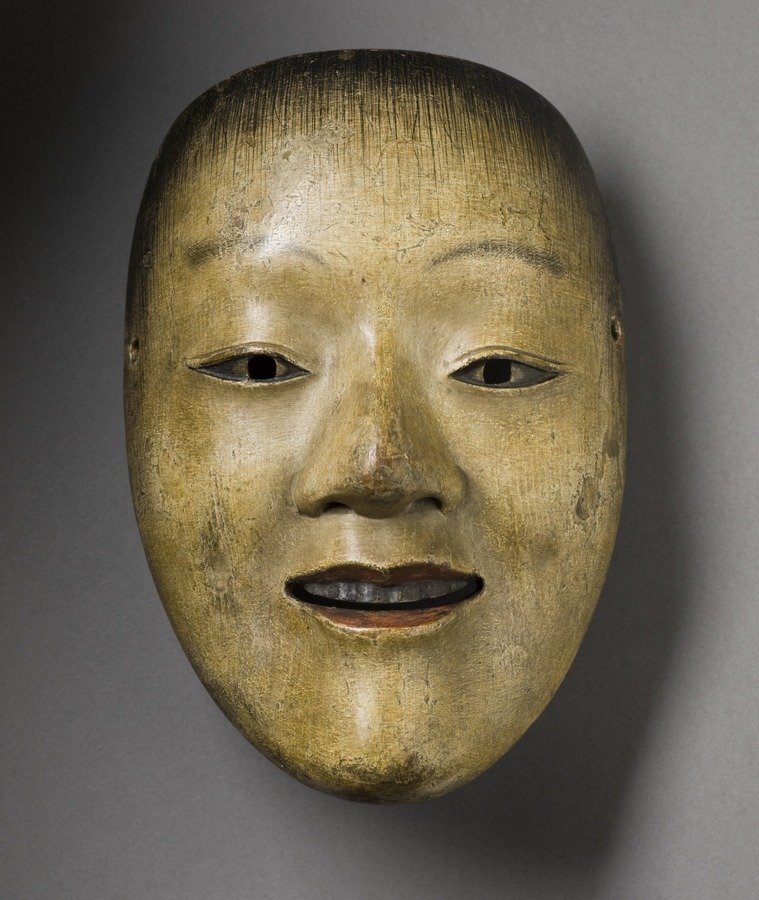
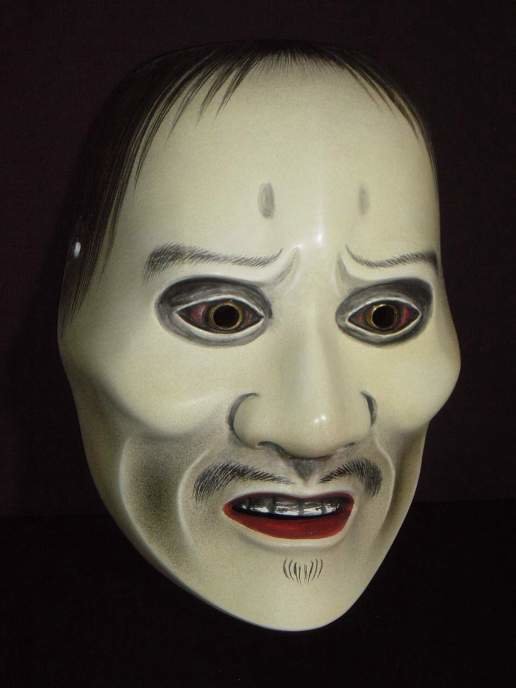
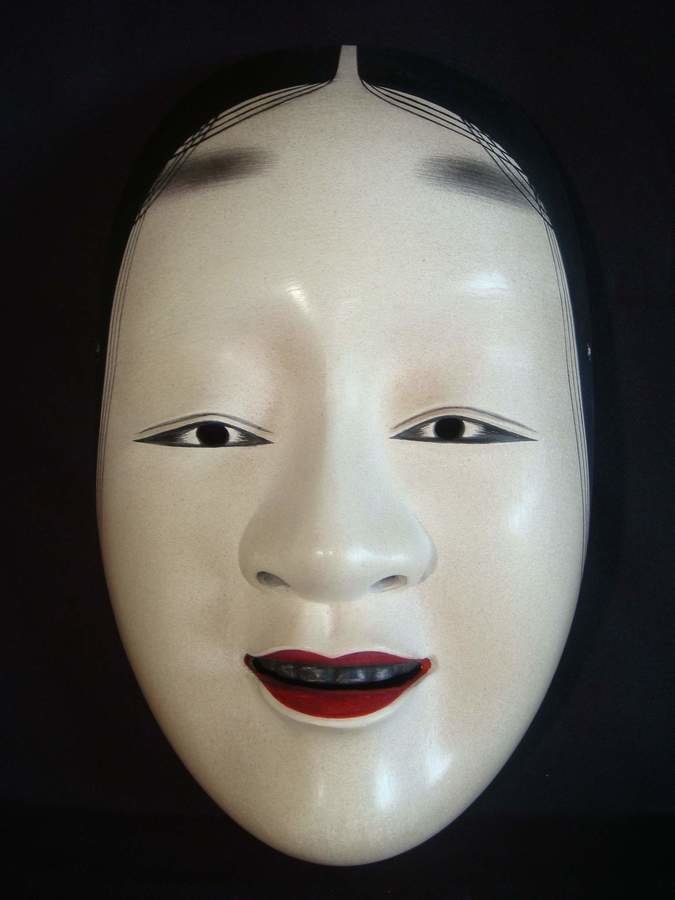
jido (young male), kawazu(frog)/yaseotoko, oumi-onna
Stage
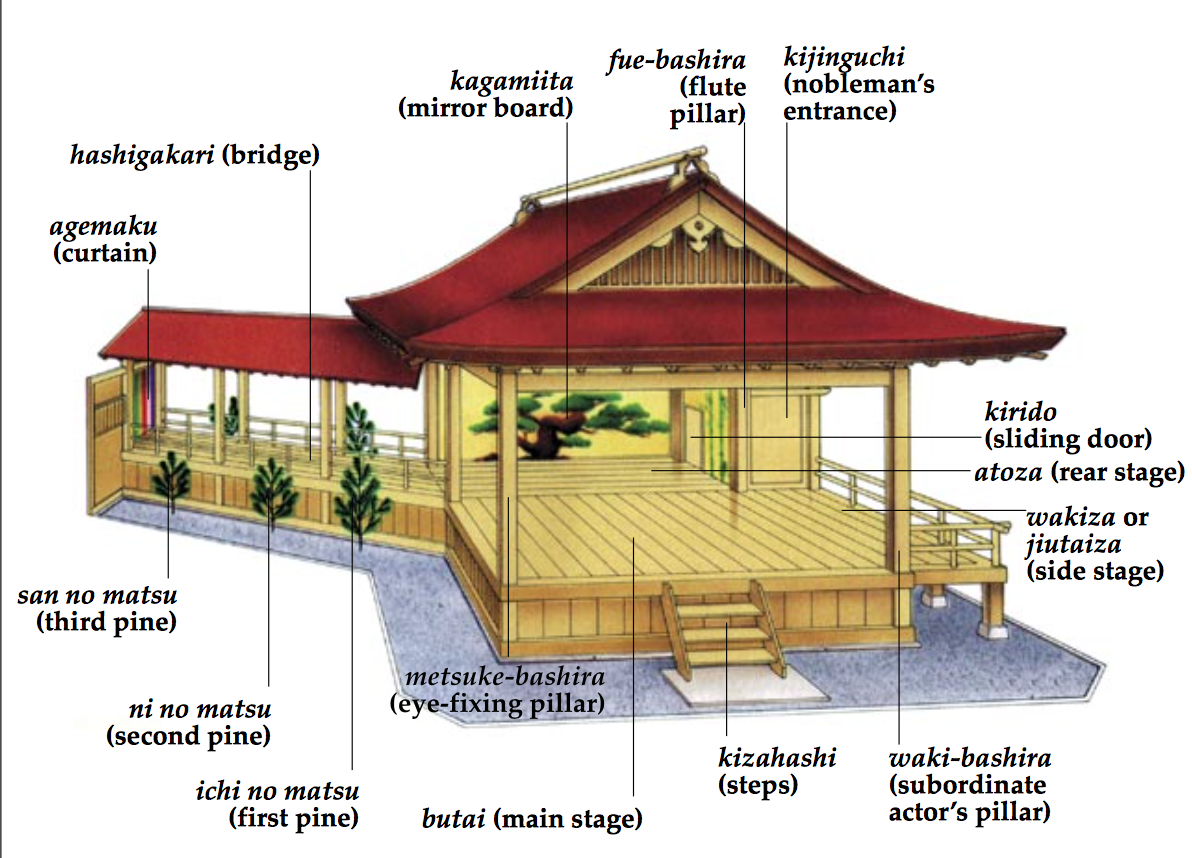
Development of Noh
- Developed from other traditional forms (sangaku, sarugaku, dengaku etc)
- Initially favoured by Ashikaga shoguns
- Kan'ami Kiyotsugu and son Zeami Motokiyo brought Noh to current form by 1450s.
- Fūshikaden 風姿花伝 : 序破急 jo-ha-kyu
Jo-ha-kyū Structure
- Structure: 序破急 jo-ha-kyū
- Jo: Preparation / Beginning
- Ha: scattering (pace increases)
- Kyū: culmination (speeds towards conclusion)
Concepts also important in other areas of Japanese cultural life, ie. ikebana flower arranging

Roles
- Main role (protagonist): shite (シテ・仕手)
- Often a character that starts as human but turns out to be a ghost/spirit. Masked.
- Secondary role: waki (脇)
- Counterpart/foil to shite. No Mask?
-
Both may have a follower/companion, known as:
- shite-tsure
- waki-tsure
- Musicians: flute, drums (hayashi)
- Chorus: 6-8 singers (jiutai)

"Funabenkei"
Kabuki

Origins and Development
- Traditionally begins in 1603, Kyoto
- Izumo no Okuni perform a 'new style' of dance
- 1629: women and boys gradually banned from performing
- 1670s-1840: 'Golden Age' of kabuki
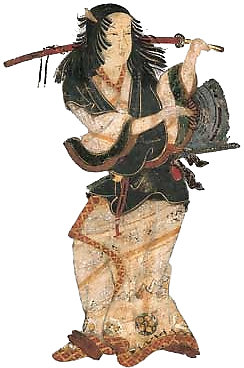
Kabuki-za
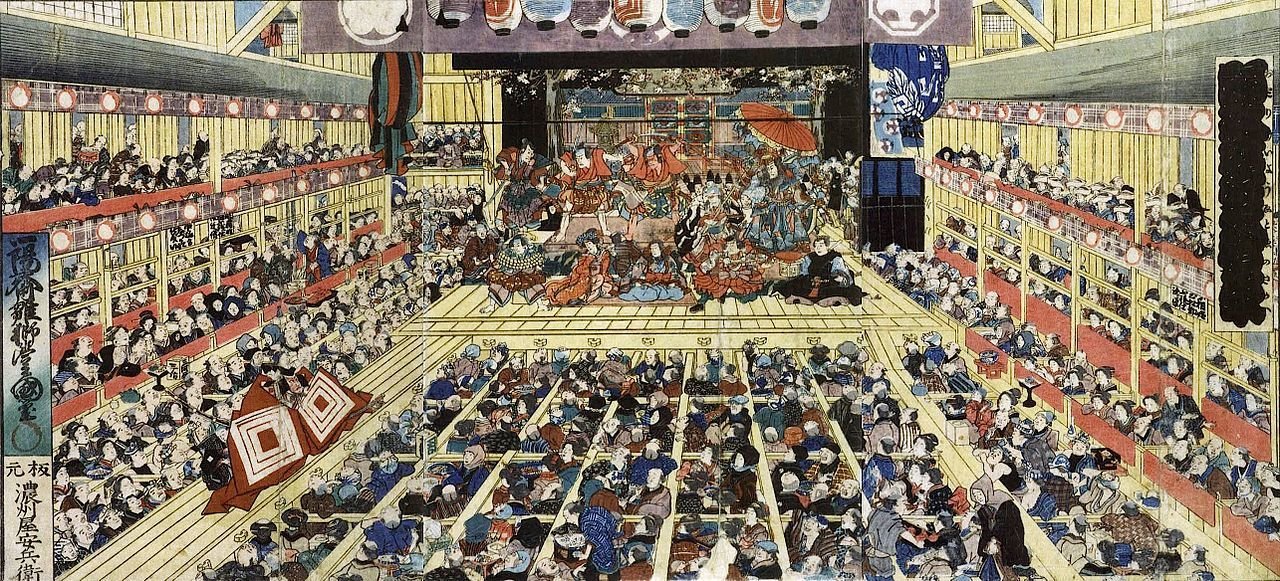
New Kabuki-za
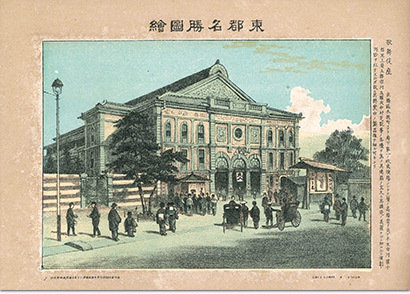

Fukuchi Gen'ichiro
Morita-za
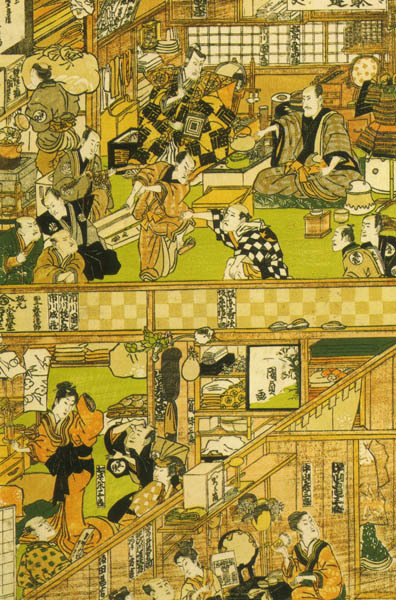
Already had a long history of putting on kabuki plays.
Had been rebuilt several times before becoming a 'western-style' theatre when rebuilt in 1872.
President Ulysses S. Grant
- Ended 1879 world tour in Tokyo
- Visited the Shintomi-za
- Play: Gosannen Oshu Gunki
- Transposed US Civil War (1861-5) to medieval Japan
- Grant -> Minamoto no Yoshiie
- Lee -> Kiyohara no Takehira
1886: Engeki Kairyo-kai
Theatre Improvement Society
- Improve lighting (candles -> electricity)
- Encourage 'realistic' acting
-
Get rid of
- onnagata
- koken(visible stage hands) etc.
- again for reasons of 'realism'
Yūraku-za, 1908
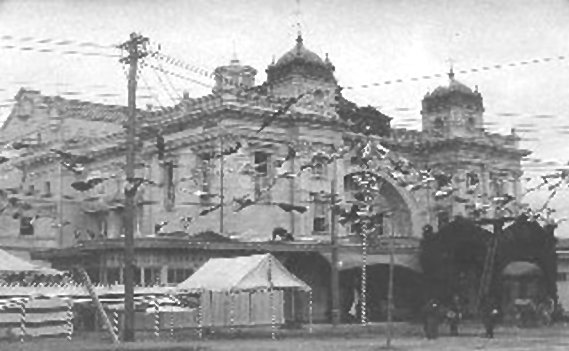
Bunraku
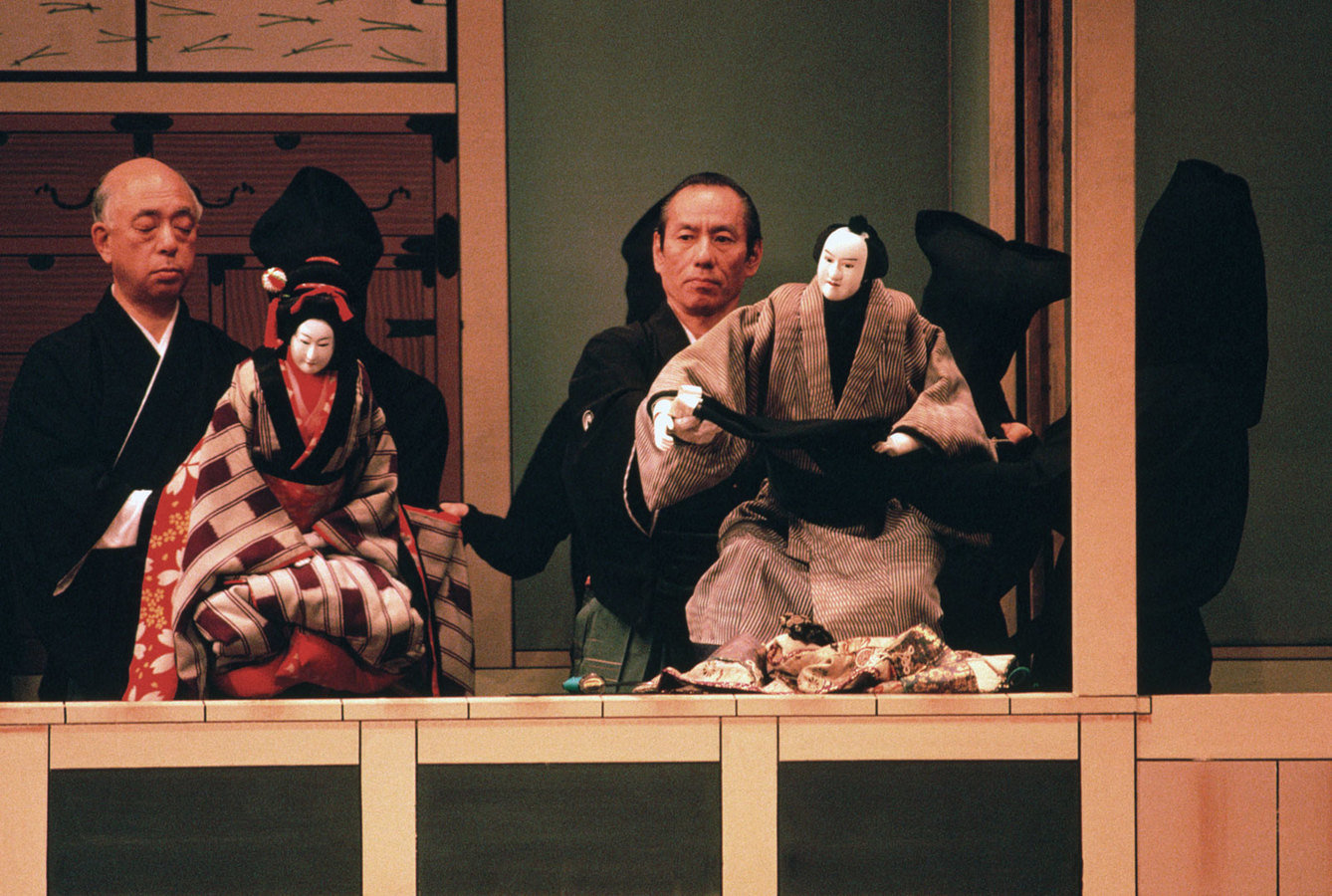
Traditional Theatre in 'the West'
Theatres
- 'In the round'
- Proscenium Arch
Mystery Plays
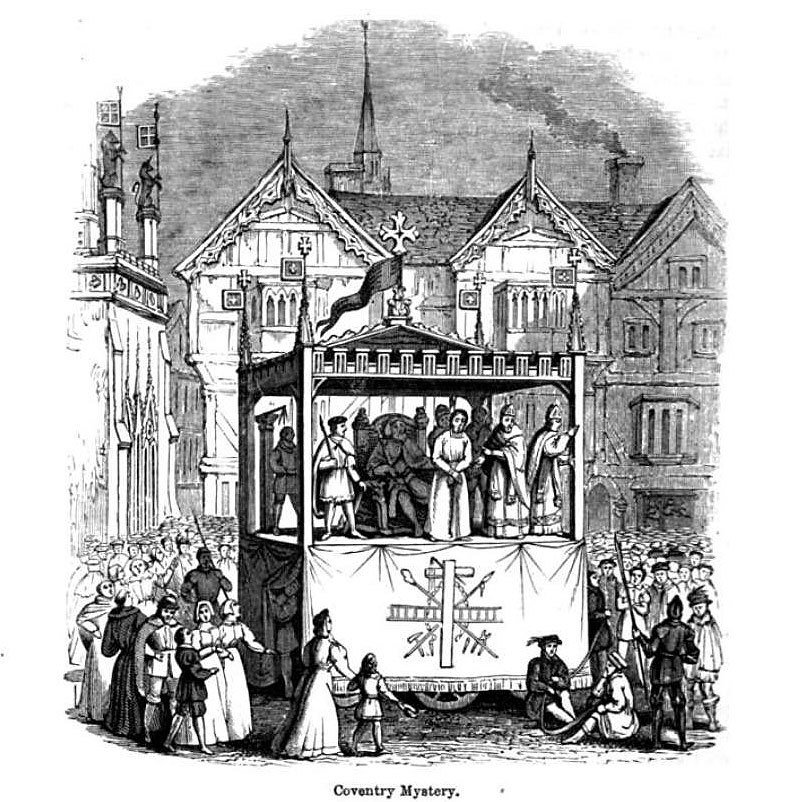
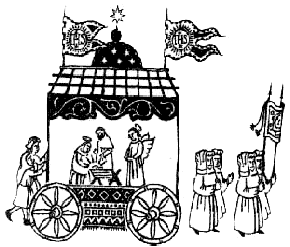
"The Globe"
"Proscenium Arch"
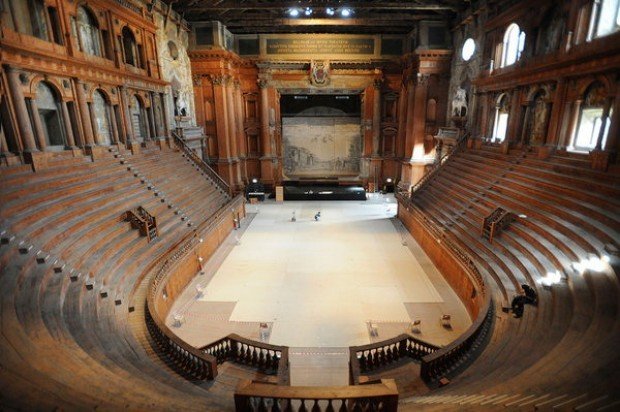
Japan meets 'the West'
-
Kawatake Mokuami
- zan-giri mono
- "cropped-hair" kabuki
- 1885: Shakespeare's "Merchant of Venice" adapted for kabuki
- By 1900 kabuki had given up on westernizing and returned to its artistic traditions...

Shinpa ("New wave")
- Amateur kabuki-style productions often base on western models, started in Osaka 1888.
- Ii Yoho - Julius Caesar 1901
- Hanafusa Ryugai - An Enemy of the People (Ibsen) 1902
- Kawakami Otojiro & Sadayakko (川上貞奴) adapted various bits of Shakespeare and did kabuki-like performances in the US and Europe 1899-1901
- 1908: Founded acting school for women

Sadayakko (1871-1946)
"Sada Yacco"
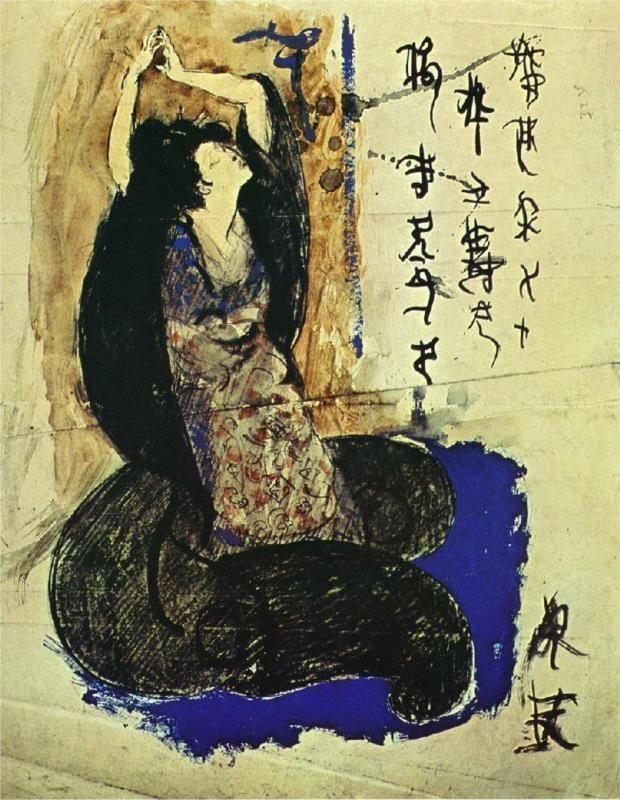

Shingeki
- Literary Art Society (Bungei Kyokai)
- Wrote original works, set up acting school in 1907
- Disbanded 1913
- Free Theatre (Jiyu Gekijo)
- Reworked western plays with kabuki actors (Ibsen, Gorky)
- Disbanded 1909
Tsukiji Little Theatre
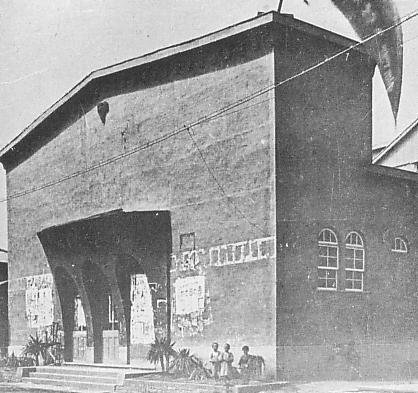
Founded in 1924 by Hijikata Yoshi (1898-1959)
Abandoned Kabuki style altogether.
Staged 'western' plays until 1926 when it put on En; the Ascetic by Tsuboichi Shoyo, one of the first 'modern' plays by a Japanese playwright.
Largest influence on postwar modern Japanese theatre.
Musical Theatre
"Madame Butterfly"
CHAPTER I. THE MYSTERIOUS LAND
At dawn we beheld Japan.
Precisely at the foretold moment the mysterious land arose before us, afar off, like a black dot in the vast sea, which for so many days had been but a blank space.
At first we saw nothing by the rays of the rising sun but a series of tiny pink-tipped heights (the Fukai Islands). Soon, however, appeared all along the horizon, like a misty veil over the waters, Japan itself; and little by little, out of the dense shadow, arose the sharp, opaque outlines of the Nagasaki mountains.
Mme. Chysanthéme
1887: Pierre Loti - 'biographical' novel about a French sailor who travels to Japan
Mme. Butterfly (novel)
1898: John Luther Long combines Loti's book with other stories
Mme. Butterfly (play)
1900: David Belasco turns Long's novel into a play - Madame Butterfly: A Tragedy of Japan
Mme Butterfly
- Puccini saw Belasco's play and wrote Mme Butterfly.
- Opened at La Scala in Milan in 1904.
- Initially - a bit of a rush job - it was not so popular but Puccini rewrote parts and it is now one of the most regularly performed operas in the world.
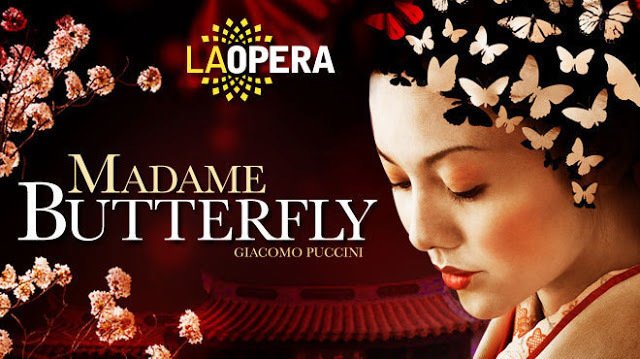
Un bel di vedremo
"Cio-Cio-San"
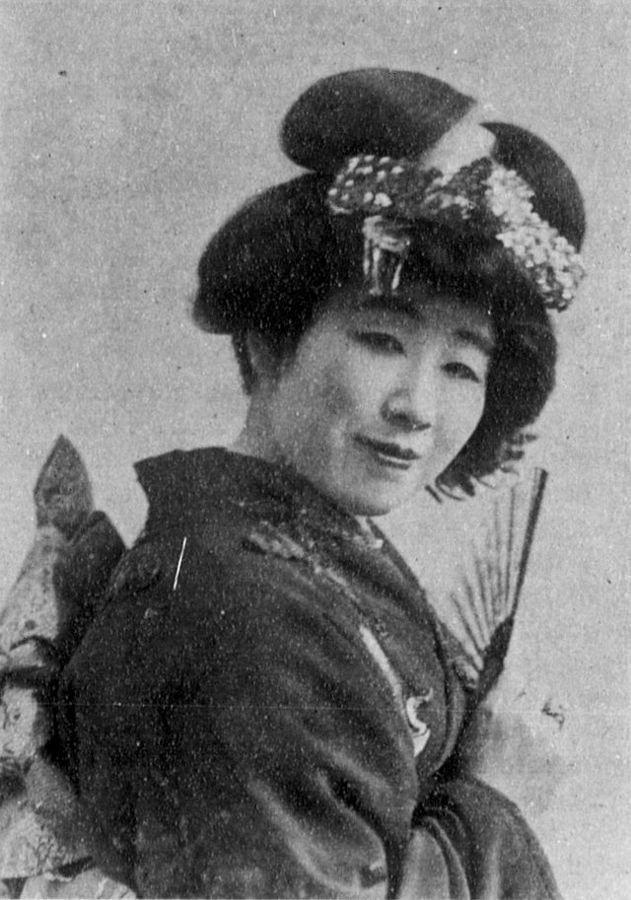
Miura Tamaki
1884 – 1946
Performed Cio-Cio-San in various productions of Mme Butterfly around the US and Europe 1915-1932
The Mikado
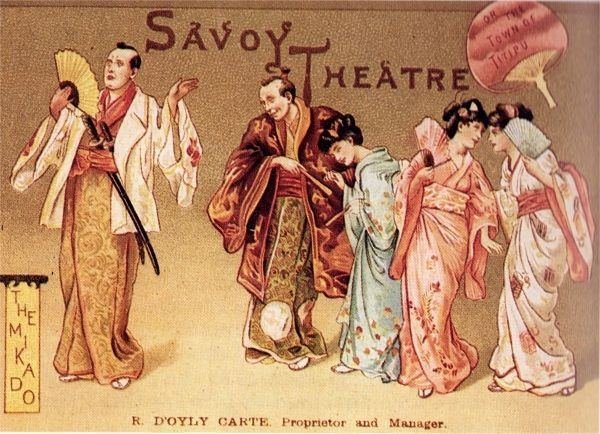
Savoy Opera
Comic operettas produced by the D'Oyly-Carte theatre company in the late c19.
Libretto: W.S. Gilbert
Music: Arthur Sullivan
Often using foreign settings where absurdity can be taken to absurd conclusions.
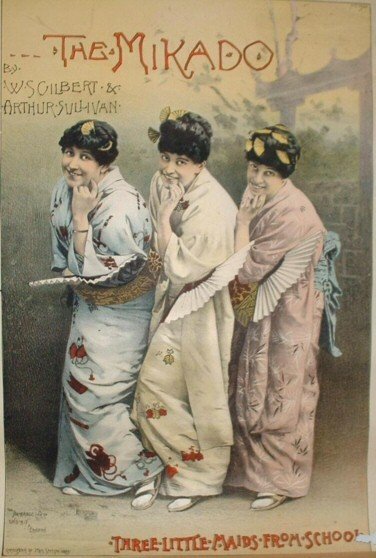
The Town of Titipu
Set in Japan but actually a satire manners and customs in Britain
- The Mikado of Japan
- Nanki-Poo, His Son, disguised as a wandering minstrel and in love with Yum-Yum
- Ko-Ko, The Lord High Executioner of Titipu
- Pooh-Bah, Lord High Everything Else
- Pish-Tush, A Noble Lord
- Go-To, A Noble Lord
- Yum-Yum, A Ward of Ko-Ko
- Pitti-Sing, A Ward of Ko-Ko
- Peep-Bo, A Ward of Ko-Ko
- Katisha, An Elderly lady, in love with Nanki-Poo
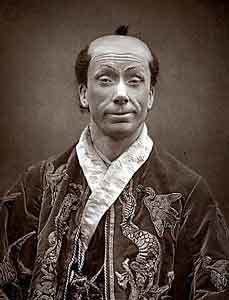
Tonyare bushi
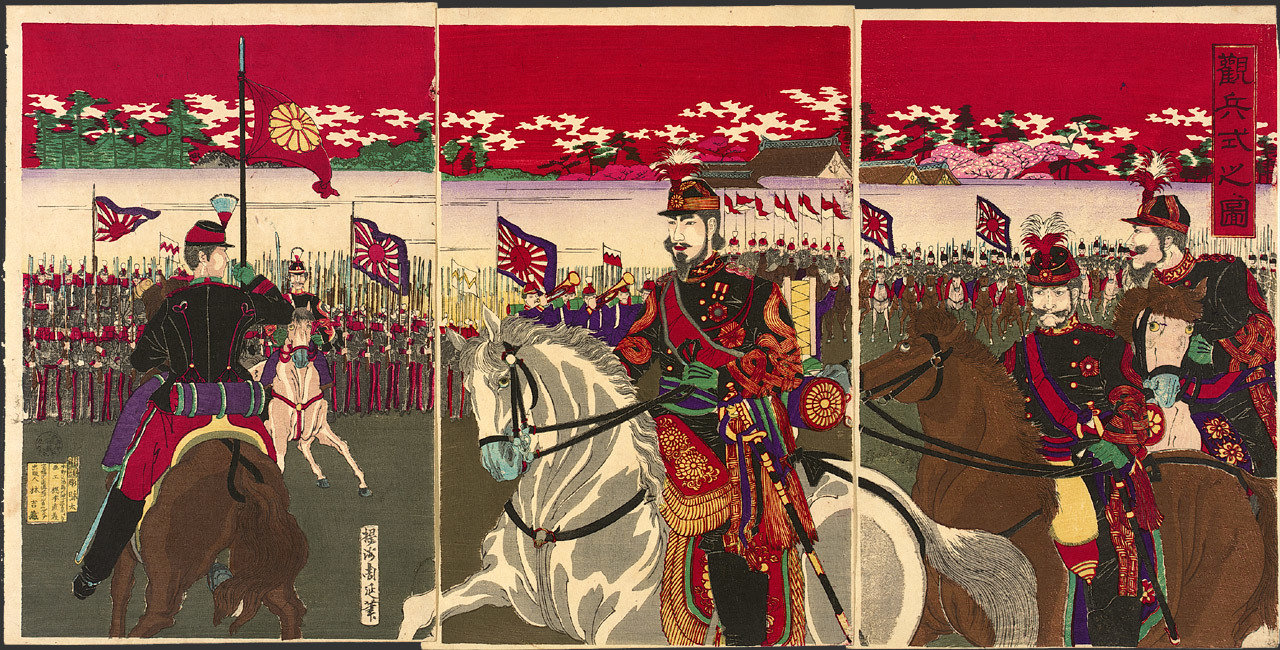
Miya-sama Miya-sama
Excerpt from Mike Leigh film Topsy-Turvy (1999) portraying Gilbert and Sullivan in the months before the staging of The Mikado
(Modern) Dance
Butoh 舞踏
Butoh 舞踏
• Hijikata Tatsumi, Ohno Kazuo
• 1959/60ish
• Dairakudakan
• Sankaijuku
Rejected the westernisation of modern dance in Japan at the time, but considered butoh...
" a direct assault on the refinement (miyabi) and understatement (shibui) so valued in Japanese aesthetics."
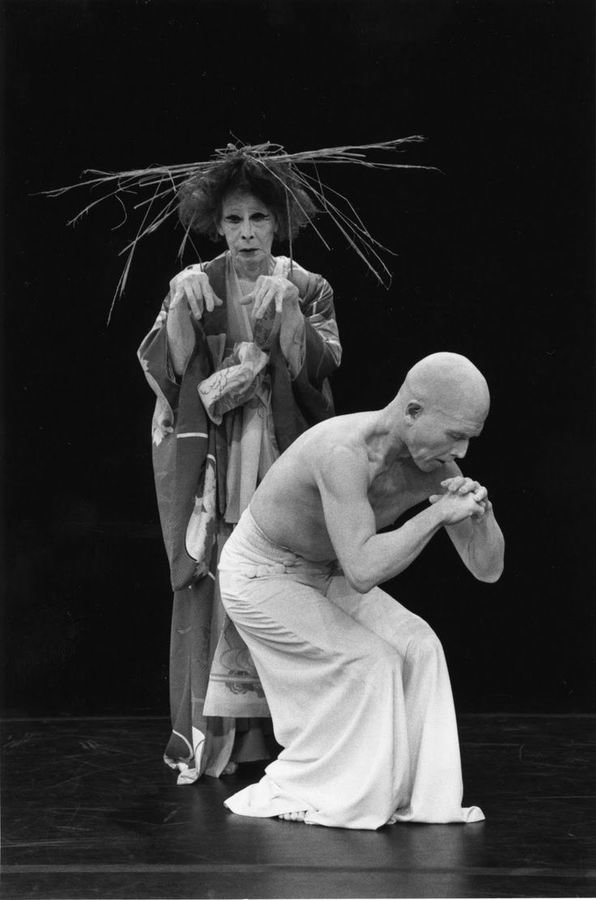
Dance Troupe: Dairakudakan
Fagaala
Next Week:
Fashion/Design/Architecture
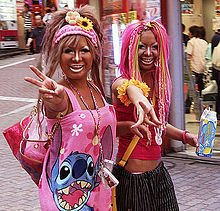
Japan and the West 10: Performing Arts
By scokobro
Japan and the West 10: Performing Arts
Covering (very briefly) main variant of traditional Japanese theatre, development in western theatre staging. Shinpa-Shingeki, (Light) Opera, Modern Dance (butoh)
- 1,119



